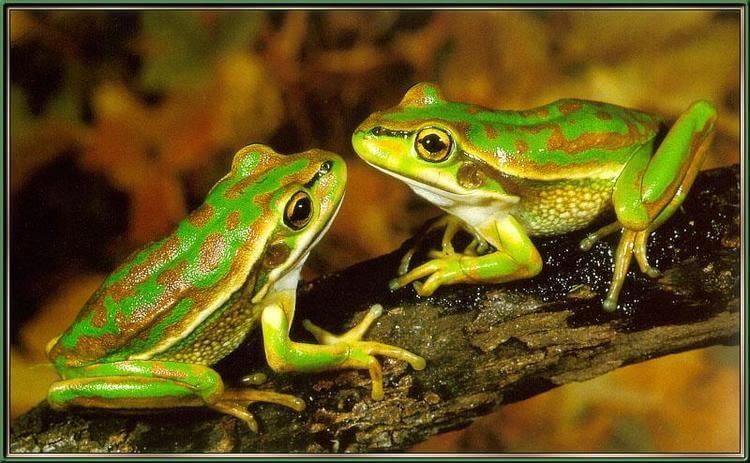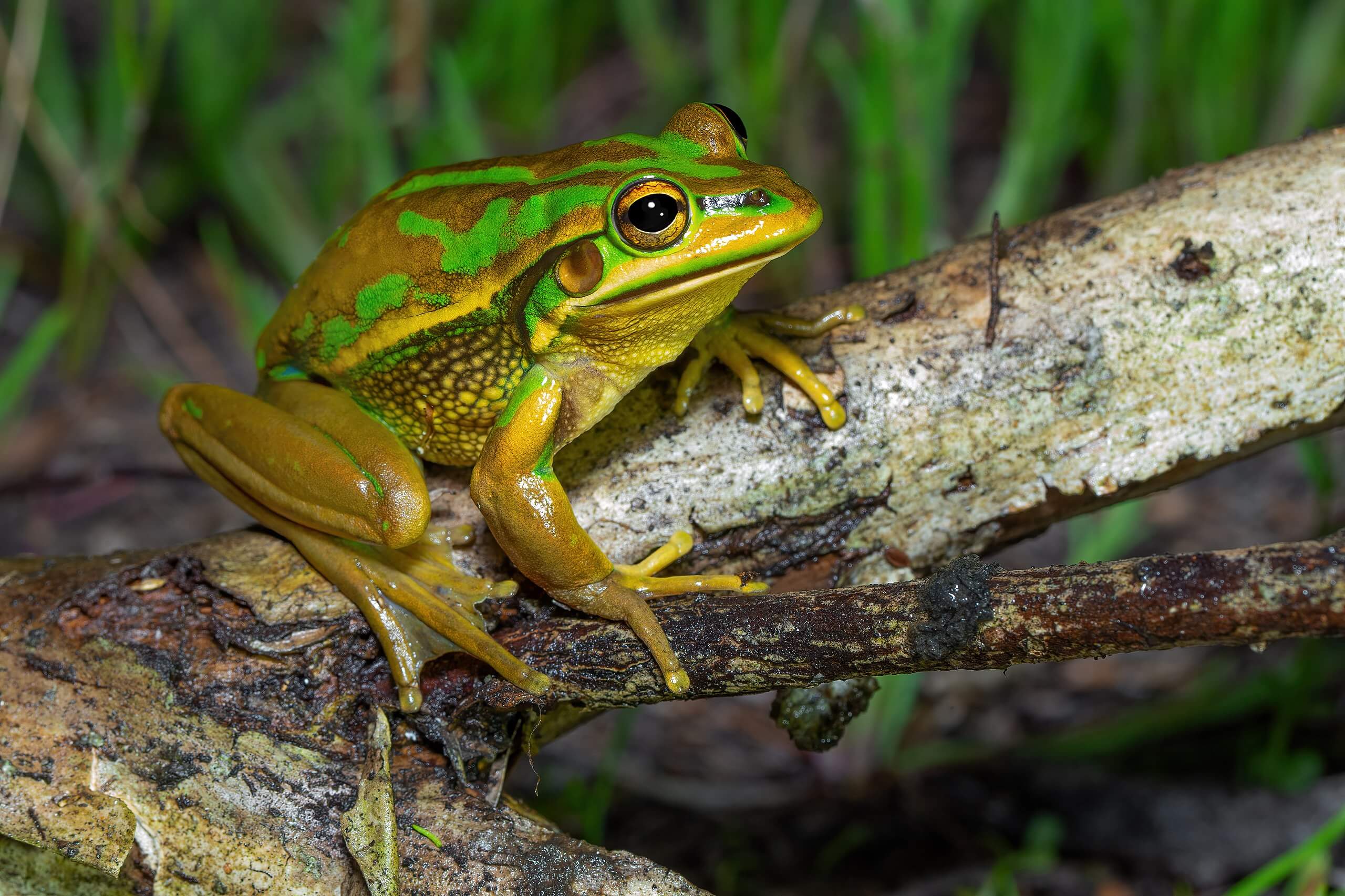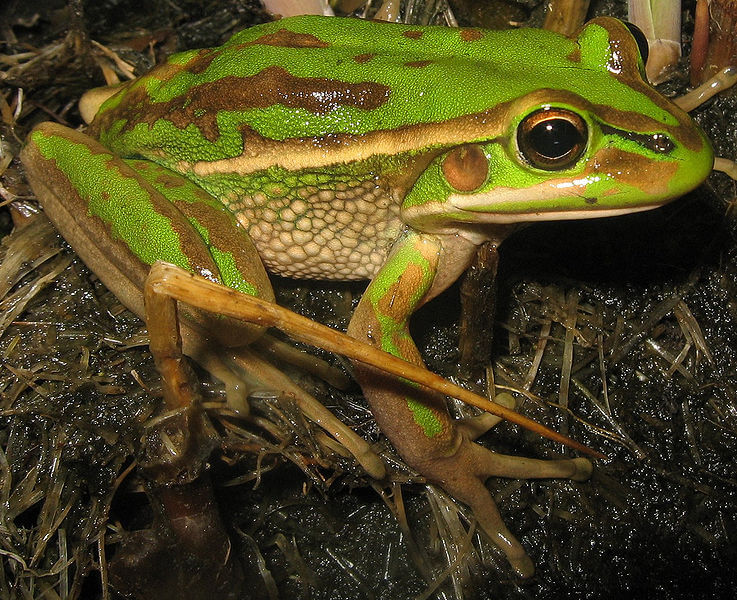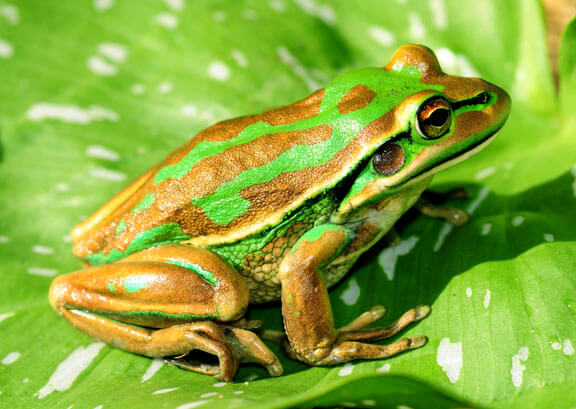The Green and Golden Bell frog of the Blue Mountains (Litoria piperata) inhabits rocky streams and ponds in its local region. The frog can be identified by its emerald green back with golden streaks, blending with its dark brown to black side stripes and underside, and bluish skin around the eyes. Measuring from 45 to 100 millimetres in length, making it one of Australia’s largest frogs.
Also named the green bell frog, green and golden swamp frog and green frog, is a ground-dwelling tree frog native to eastern Australia
About the beautiful Green and Golden Bell Frog
The Green and Golden Bell Frog is found in many Blue Mountains’ waterways, particularly close to bulrushes. Though it may appear golden or even black with a cream underside; if you see one, make sure to catch a glimpse of its true beautiful green colour. The word bell in its name comes from three very distinct golden flaps on each side of its head. With stunning translucent skin like that, they are quite simply gorgeous frogs! They range from 45 to 100 millimetres.
The voracious adults have very broad diets, including insects such as crickets, larvae, mosquito wrigglers, dragonflies, earthworms, cockroaches, flies, and grasshoppers. They are also known to eat freshwater crayfish and slugs, and other frogs, even of the same species. They have a strong tendency for cannibalism, and frequently these in the same enclosure devour each other.
Where to see them
The Green and Golden Bell Frog is only found within close proximity to water, as it relies on damp conditions to survive. While they can usually be spotted around wetlands such as swamps, dams or even backyard ponds, you may come across them in other damp locales such as rain forests. The best place to look for these little critters is within close proximity to freshwater streams. For example, if you’re hiking along a creek-bank in Katoomba, don’t be surprised if you stumble upon one of these little beauties! You might just get lucky!
Are they endangered?
The first contact with humans is rarely amicable. The Green and Golden Bell frog is native to Australia’s Blue Mountains, but urbanisation over recent years has meant that their natural habitat has shrunk substantially, particularly as forest fragments are carved up by development. In addition, pollutants from human activity have caused both degradation in water quality and increasingly frequent floods due to altered weather patterns. It’s not surprising then that populations have dwindled significantly; conservationists estimate that only around a dozen populations remain.
These factors all make for a deadly combination: if an individual Green and Golden Bell frog survives to adulthood it can live for many decades, but their offspring don’t tend to be so lucky. They face many predators before they even reach adulthood, meaning it can take several generations for an individual population to recover from losses sustained during flooding or other disasters.
How you can help protect them
The Green and Golden Bell Frog is listed as threatened under New South Wales legislation, meaning their numbers are low. It is best to stay away from any Green and Golden Bell frogs you see in your local waterway, so that you don’t do anything to harm them. If you notice someone trying to collect or take away a Green and Golden Bell frog from a NSW waterway, report it to 1300 130 372.
#arbmbushawareness




